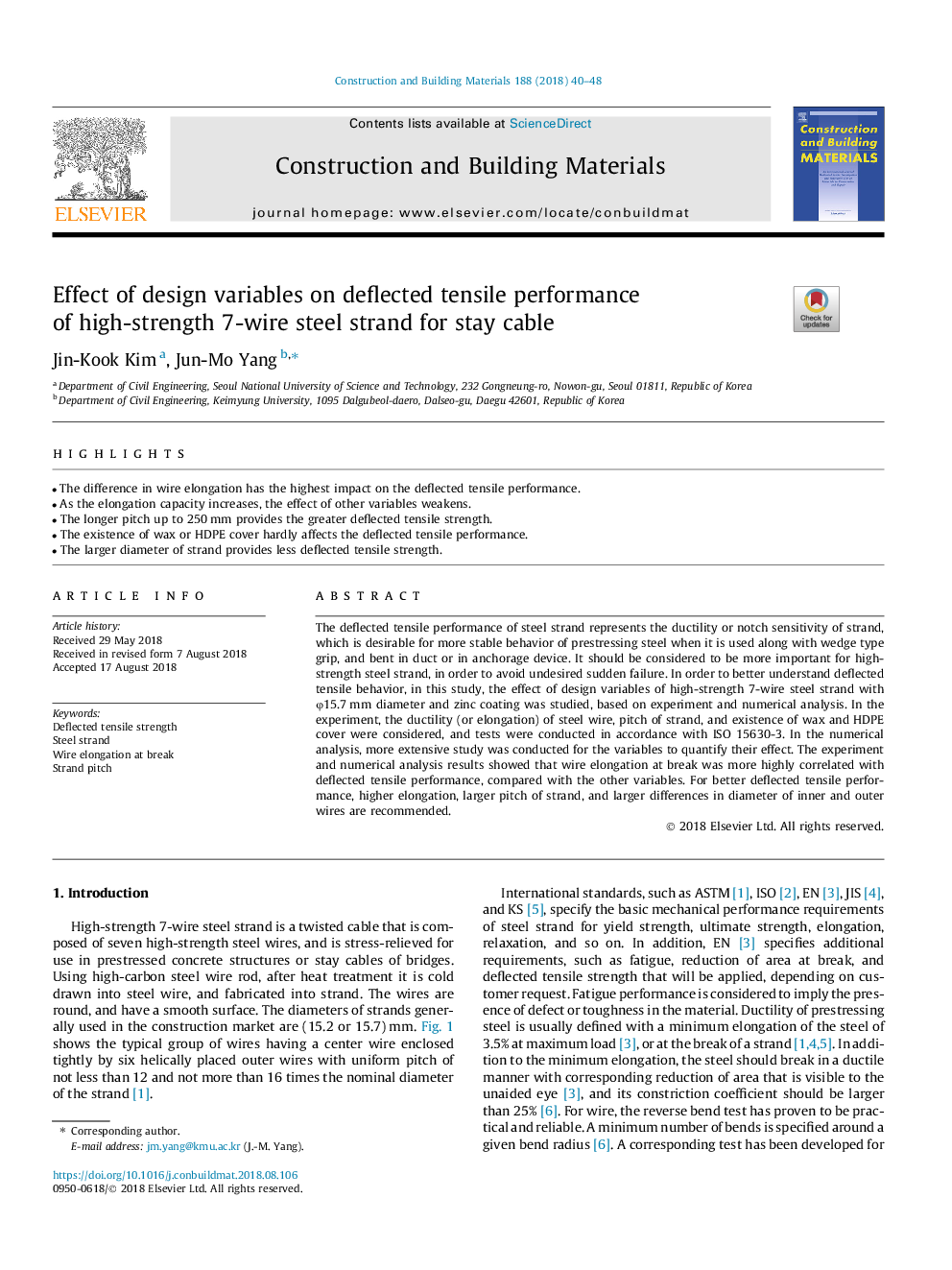| Article ID | Journal | Published Year | Pages | File Type |
|---|---|---|---|---|
| 8947036 | Construction and Building Materials | 2018 | 9 Pages |
Abstract
The deflected tensile performance of steel strand represents the ductility or notch sensitivity of strand, which is desirable for more stable behavior of prestressing steel when it is used along with wedge type grip, and bent in duct or in anchorage device. It should be considered to be more important for high-strength steel strand, in order to avoid undesired sudden failure. In order to better understand deflected tensile behavior, in this study, the effect of design variables of high-strength 7-wire steel strand with Ï15.7â¯mm diameter and zinc coating was studied, based on experiment and numerical analysis. In the experiment, the ductility (or elongation) of steel wire, pitch of strand, and existence of wax and HDPE cover were considered, and tests were conducted in accordance with ISO 15630-3. In the numerical analysis, more extensive study was conducted for the variables to quantify their effect. The experiment and numerical analysis results showed that wire elongation at break was more highly correlated with deflected tensile performance, compared with the other variables. For better deflected tensile performance, higher elongation, larger pitch of strand, and larger differences in diameter of inner and outer wires are recommended.
Keywords
Related Topics
Physical Sciences and Engineering
Engineering
Civil and Structural Engineering
Authors
Jin-Kook Kim, Jun-Mo Yang,
